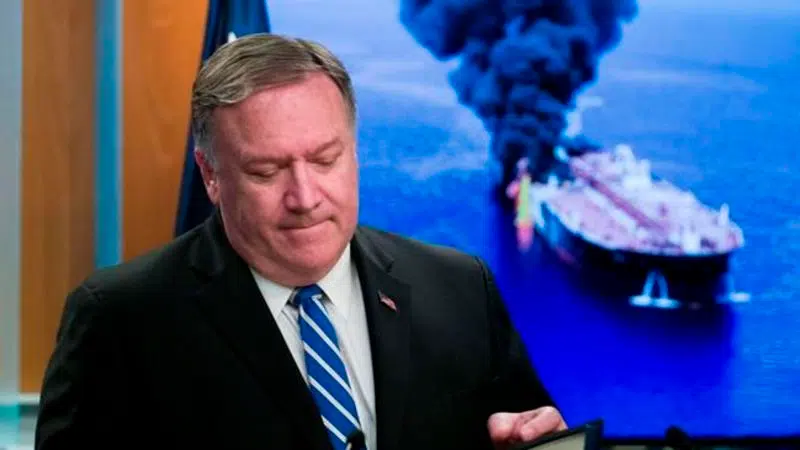
Tankers struck near Strait of Hormuz; US blames Iran
DUBAI, United Arab Emirates — The U.S. blamed Iran for suspected attacks on two oil tankers Thursday near the strategic Strait of Hormuz, denouncing what it called a campaign of “escalating tensions” in a region crucial to global energy supplies.
The U.S. Navy rushed to assist the stricken vessels in the Gulf of Oman off the coast of Iran, including one that was set ablaze. The ships’ operators offered no immediate explanation on who or what caused the damage against the Norwegian-owned MT Front Altair and the Japanese-owned Kokuka Courageous. Each was loaded with petroleum products, and the Front Altair burned for hours, sending up a column of thick, black smoke.
U.S. Secretary of State Mike Pompeo said the U.S. assessment of Iran’s involvement was based in part on intelligence as well as the expertise needed for the operation. It was also based on recent incidents in the region that the U.S. also blamed on Iran, including the use of limpet mines – designed to be attached magnetically to a ship’s hull – to attack four oil tankers off the nearby Emirati port of Fujairah and the bombing of an oil pipeline in Saudi Arabia by Iranian-backed fighters in May, he said.
“Taken as a whole these unprovoked attacks present a clear threat to international peace and security, a blatant assault on the freedom of navigation and an unacceptable campaign of escalating tension by Iran,” Pompeo said. He provided no evidence, gave no specifics about any plans and took no questions.


